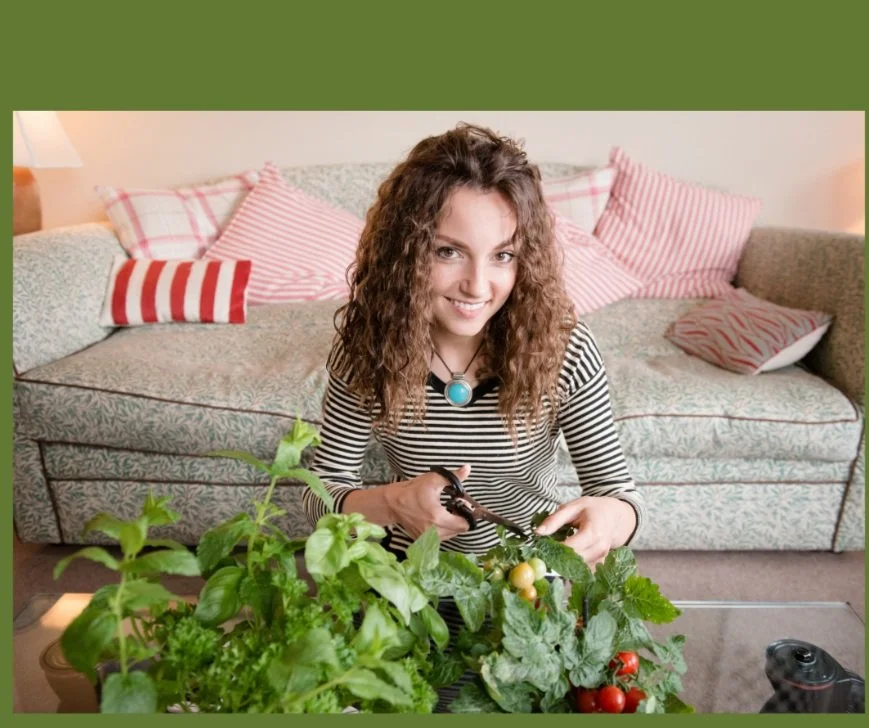Controlling humidity in the home is important for your plant’s health. High levels of humidity promote bacteria, molds, and mildew. Not enough humidity causes plants to dehydrate quickly and possibly suffer cell damage.
When I moved from Kentucky (Zone 6B) to Wisconsin (Zone 5A) last year I realized how important humidity was. Last winter the humidity in my apartment dropped from a summer average of 60% to a winter average of 16%.
My plants and I felt as if all the water was being sucked from our bodies. I was especially distressed when I lost one of my lemon trees.
What is Humidity?
Humidity is simply moisture in the air. It’s a natural part of our environment and atmosphere.
You may remember learning about the water cycle in school. This is the natural cycle of evaporation and condensation. Some areas of the country are naturally more humid than others.
Keeping a good humidity level is important for you and your plants.
Too Much Humidity
Encourages mold
Bad for respiratory illnesses
Supports the growth of spider mites
Too Low Humidity
Dries out plant leaves and inhibits photosynthesis
Spreads viruses
Watch for brown and/or dry leaves and flower buds shriveling
What is The Best Humidity Level For My Indoor Garden Plants?
The ideal humidity level for indoor plants is 50%. A range of 40 - 60 percent is a healthy level for most houseplants.
You can measure the humidity in your home with a hydrometer.
I actually have several temperature/hydrometers around my home so I can monitor the microenvironment in each room.
Tips To Raise Humidity
Place plants in a pebble tray
Misting
Use a humidifier
Move plants to a more humid room such as the bathroom in winter
Terrariums
Pebble Tray - purchase a waterproof tray and add a layer of pebbles, marbles, or even pretty tumbled crystals. Fill the tray halfway with water. The water will evaporate adding moisture to the air surrounding the plant. (Note: you still need to water your plants!)
Misting - misting uses a spray bottle set on its most open setting. Spray your plants with a light mist daily. (Note: some plants such as African Violets don't like misting)
Humidifier - use a warm mist to mimic the plant’s natural environment. Place it in the middle of a grouping of your high-humidity need plants. Be careful where you place a humidifier since you don’t want moisture on wood furniture or flooring.
The best time to run your humidifier is morning to early afternoon. A warm mist is best for adding moisture in the wintertime.
Bathrooms - when your central heat zaps the humidity in winter a great recluse for plants is in the bathroom. The warm moist air from showers and hand washing make a comfortable place for spider plants and other tropicals. I even put a grow light bulb in my bathroom light fixture.
Terrariums - this is a great growing environment to provide extra humidity and even targeted light. I just used an inexpensive round fish tank.
Check out this video I made of my first terrarium! Update - that terrarium is doing great!
Tips to Lower Humidity
Ventilation
Watering cautions
Move plants
Ventilation - opening windows, using fans, and turning on the AC will all help lower humidity and help with good air circulation.
Read our article Air Circulation For Indoor Gardens.
Watering - be especially careful not to overwater in those hot humid months. Plants pull water from the air as well as the soil. Overwatering will lead to mold and fungus issues.
Dehumidifier - removes moisture from the atmosphere as well as provides more air circulation. The water ends up in a tray and will need to be emptied on a regular basis.
Move plants - finding the best space for a plant is important. In hot humid summer weather move cacti closer to fans so they get more air circulation.
I have a video on humidity as well. Please like and subscribe to our YouTube channel!!
Group Plants According To Needs
Plants That like High Humidity
Orchids
Boston and staghorn fern
Calatheas or prayer plants
Air plants
Alocasia
Philodendron
Plants That like Lower Humidity
Succulents
Cactus
Aloe Vera
Snake plant
Author, Ame Vanorio, is the founder of Fox Run EEC and an avid grower. You can learn more about her on our Partners page.






We don’t always think about air circulation as being a critical component to raising vegetables and fruits indoors. When food plants are grown outdoors they are naturally exposed to wind and air currents. In addition, both plant leaves and roots need air moving around them.
Modern homes are built to eliminate drafts and control airflow so we are warm or cool according to the season. This does not necessarily mean there is good air circulation.